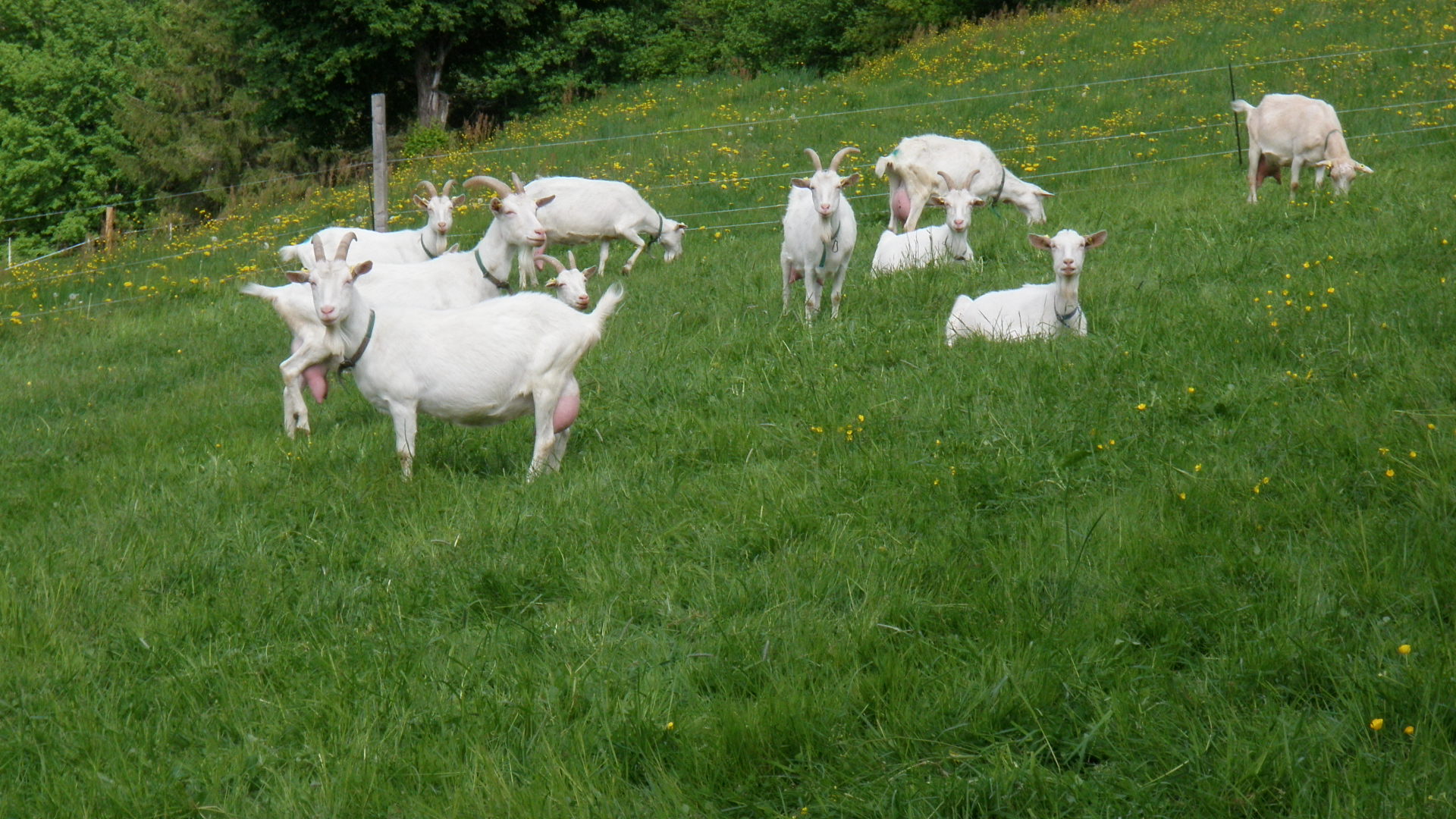Generally
In contrast to sheep, goats are not pure grass eaters; they are so-called mixed eaters, meaning they prefer leaves from bushes and trees, young shoots and buds, herbs, etc. The changing climatic conditions also require appropriate adjustments in plant breeding, especially in terms of on dryness. The extent to which new breeds or new compositions of plant mixtures for pastures are also accepted by goats is one aspect of the investigations in this project. The higher the feed intake, the higher the expected milk supply. Of course, the yield of the land and the nutrient content of the feed also play an important role in achieving optimal animal performance. Dairy goats react very quickly to a changing feed base. If there are any of the 4 mixtures used that are not so tasty in terms of palatability, this will immediately have an impact on performance due to the lower feed intake and can therefore be measured. By evaluating the plant residue, it can be determined which plants are preferred to be eaten and which are rejected.
Experimental planning
The experimental pasture areas will be recreated in spring 2020. Four different pasture mixtures will be examined. In addition to a standard mixture, three experimental mixtures are grown: a species-rich mixture with at least 15 species, a clover-based mixture with horn trefoil, and an herbal mixture. The four mixtures are grown in the shape of a Latin square with a plot size of 4 x 6 m. A total of 4 repetitions, i.e. 16 plots, which together make up an area of 384 m². The botanical investigations are carried out on these areas (stock changes, LAI measurement). In addition, four plots of land each measuring 384 m² will be created with the four mixtures. The feed intake of the goats is recorded on these large plots. Four goats graze per plot for 5 to 6 days. The duration of grazing is designed so that the animals do not have to eat everything. A total of 20 Saanen goats are available for grazing. All plots are grazed at the same time as the goats. After grazing, a cleaning cut is made and the remaining feed is collected for each large or small plot. The areas should be grazed a total of 5 to 6 times per year, depending on the weather and growth. The yield is estimated before each grazing by measuring the plant height using a rising plate meter. In the time between grazing on the experimental areas, the goats graze together on the surrounding permanent pastures of the sheep and goat department.
Daily milk production is recorded throughout the entire lactation period. The test for milk ingredients is only carried out in the week before, after and in the week of grazing on the test areas.









